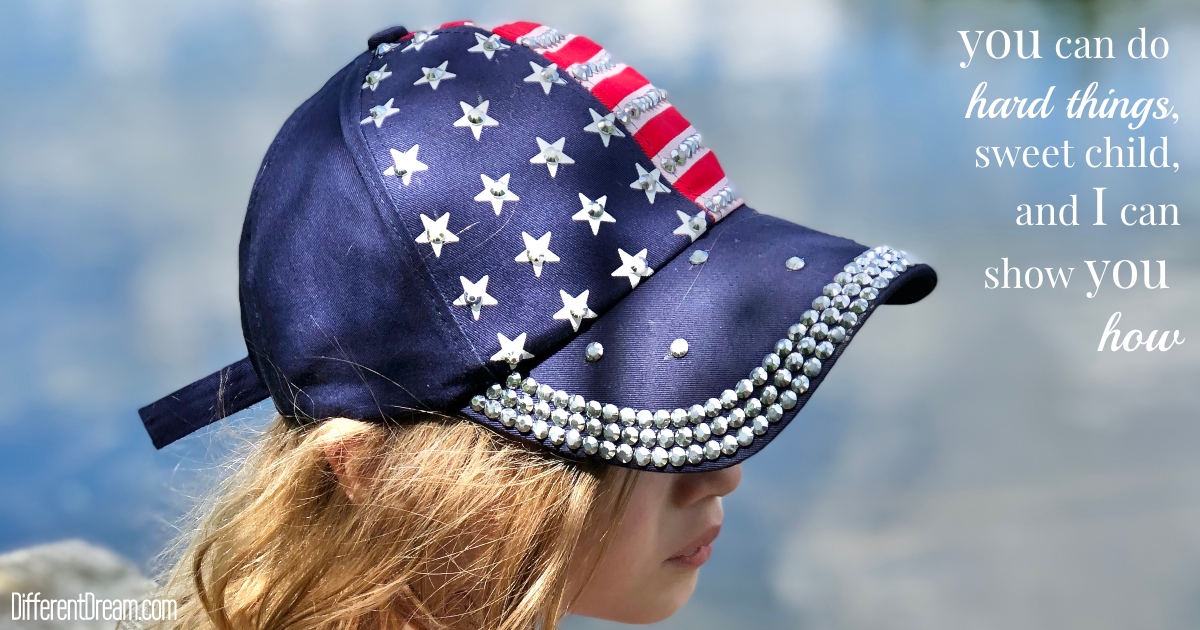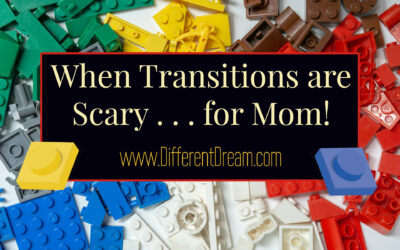We Can Role Model How To Process Feelings in a Healthy Way

We can role model how to process feelings in a healthy way to our kids with special needs and disabilities says guest blogger Laura Spiegel. In this post she explains both how and why to make this practice part of every day life.
“I like your headband,” my daughter says out of the blue, bike helmet in hand. “And your purple pants. You look like Superwoman!”
“I feel like Superwoman today,” I smile. “I’m strong, and I can do hard things.”
My daughter nods and zooms down the driveway. A year ago, she would have walked her bike down the small slope with caution. Now she’s learning to ride with no hands.
Hours later, we sit at the dinner table and butter our corn. Kernels spray left and right as my daughter relishes her first summer with two big front teeth.
“Why do you look like that?” she asks as she munches on another row.
“I guess I’m feeling a little sad,” I respond.
“’About the homeless?” she prompts.
“Um, no… But now that you mention it, I feel sad about the homeless too.”
A little later, I approach my daughter about doing her respiratory therapy for her cystic fibrosis.
She sighs. “I wish I didn’t have to do mask and vest today,” she remarks. “It’s so hard.”
And it is. Her twice daily respiratory therapy is an essential part of her lung health. But it’s also a nuisance and a reminder of the one part of her that’s different from her friends.
“You’re right. It is hard,” I reply. “And you know what? When you do it, you are reminding yourself that you can do hard things.”
She pauses and smiles, then stretches her arms into her vest. She says nothing, but I can tell that this has resonated. She can do hard things.
It’s late, and I’m tucking my daughter into bed. “I feel left out,” she admits as she pulls the covers up tight. She’s lonely because I let her brother sleep in my bed for the last time…again.
“I get it,” I reply. “Sometimes I feel left out too.”
She yawns and closes her eyes. It’s late, and she’s too tired to argue.
Where am I going with this?
I want you to know that we can role model how to process feelings in a healthy way to our kids. Sometimes we feel like we have to be stoic for our kids. Impervious to the demands of everyday life, a smile on our face always. When our kids see our frowns and ask what’s wrong, we often sweep them under the rug with a “Nothing” or “It’s fine” or “Don’t worry about it.”
We parents of kids with special medical, developmental, or behavioral health care needs don’t want to burden our kids with our worries, our concerns, our fears. We believe that our bravery and strength give our kids comfort – and often times, it does.
Our kids need to feel secure and safe, especially when they are young. They don’t need us to dump the weight of the world on their shoulders.
But sometimes, it is okay to let our guard down in an age-appropriate way. To let our kids know that even though we are adults, we experience ups and downs too.
Just as we role model what it looks like to work hard or to be a good friend, we can role model how to process feelings in a healthy way.
When we express our own feelings and label them, we encourage our kids to recognize feelings in themselves and in others. We also help to cultivate a sense of emotional safety – one that allows our kids to be honest with themselves – and to trust that their thoughts and feelings will be treated with the respect they deserve.
As our kids with special health care needs grow, an awareness of their emotions can help them communicate where they may need additional support. For many of our kids, this will be an especially critical skill as they take ownership of communicating with physicians, asking questions of their care teams, and advocating for their needs.
I’ll be the first to admit that I don’t always do this well. I’m a pro at bottling things up and waiting for the proverbial straw to break the camel’s back and blow my cover. I’m calm, I’m calm, I’m calm, I’m calm, and then I explode!
I’m trying to get better at this. Taking time for myself during the day, even if it’s just ten minutes here or there, is helpful. So is practicing gratitude. And when I lose my cool in front of my kids, I try to take the time to apologize to them.
It’s okay to feel frustration or anger, but I can do a better job of demonstrating what it looks like to process through these feelings in a healthy way.
It’s morning again, and I’m listening to the birds call out their daily greeting. More flowers have bloomed, and I can’t wait to show them to my daughter.
It’s Sunday.
I’m excited for what the day will bring.
I feel happy.
Do you like what you see at DifferentDream.com? You can receive more great content by subscribing to the monthly Different Dream newsletter and signing up for the daily RSS feed delivered to your email inbox. You can sign up for the first in the pop up box and the second at the bottom of this page.

By Laura Spiegel
Laura Spiegel spent 12 years at the world’s largest biotech company, partnering with professionals and care teams to help people with special needs and disabilities lead full and happy lives. In 2013 her daughter was diagnosed with cystic fibrosis. Laura now hosts Paint Her in Color, a website that offers emotional support to parents of children with special medical, developmental, or behavioral health care needs. When she isn’t reading, writing, or soaking up time with her husband and kids, Laura can be reached at Paint Her in Color, by email at laura@paintherincolor.com, and on Facebook and Twitter.
Related Posts
How Do I Let Go of My Adult EA/TEF Child?
Valeria Conshafter explores the question “How do I let go of my adult EA/TEF child?” for EA/TEF Awareness Month.
How Can an EA/TEF Parent’s Anxiety Be Held in Check Before their Child Starts School?
Karena Skibinski shares her answers to the question: How can an EA/TEF parent’s anxiety be held in check before their child starts school?
What’s Working on Your ADHD Journey?
Guest blogger Lisa Pelissier provides ADHD management tips from her own journey and asks, “What’s working on your ADHD journey?”






0 Comments